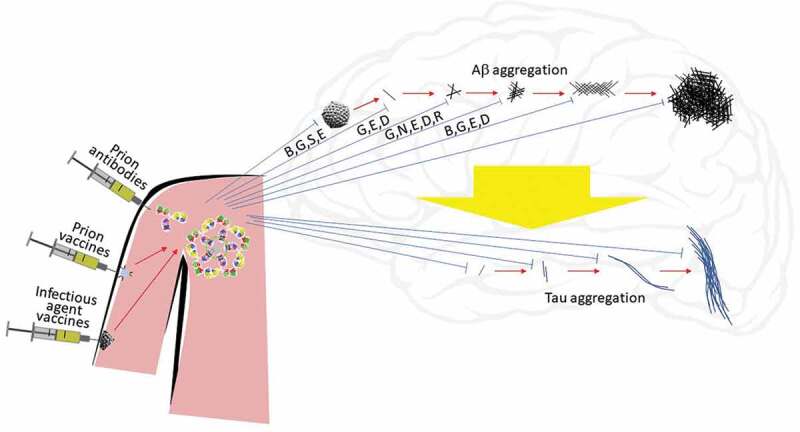Figure 1.

In Alzheimer’s disease (AD), amyloid β protein (Aβ) monomers aggregate into oligomers, protofibrils, fibrils, and amyloid plaques (red arrows, left to right top), possibly inducing tau aggregation (wide yellow arrow) into oligomers, paired helical filaments, and neurofibrillary tangles (left to right bottom). These or associated processes might damage neuronal function and cause dementia. Because Aβ and tau aggregates can induce the spread of Aβ and tau aggregation, they can act like prions. Infection (virus, center top) may stimulate production of Aβ as an innate immune system response. Antibodies (IgG or IgM, center left) may bind and neutralize (blue lines) infectious agents or different stages of aggregation of Aβ or tau, thus possibly preventing or slowing the progression of AD. Antibodies to Aβ or tau (prion antibodies) or to traditional infectious agents such as viruses may be produced artificially and injected, or they may be induced by vaccination (prion vaccines or infectious agent vaccines). Antigens may be fragments of monomers of Aβ or tau or stabilized aggregates (oligomer, with blue disk symbolizing stabilization) or may be fragments of infectious agents. Letter codes indicate specific antibodies known to preferentially bind particular aggregation states of Aβ: B = bapineuzumab, G = GSK933776, S = solanezumab, N = BAN2401, E = gantenerumab, D = aducanumab, R = SAR228810.
